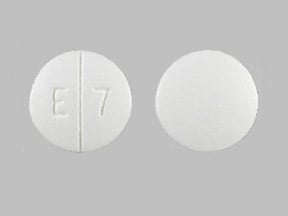
Ethambutol Coupons & Savings Card – Discount Prices from $22.12
Generic for: Myambutol
My prescription
Edit
400MG, Ethambutol (60 Tablets)
Select pharmacy

CVS
$28.50
COUPON PRICE
Walgreens
$22.12
COUPON PRICE
Albertsons
$41.00
COUPON PRICE
Walmart
$41.65
COUPON PRICEEthambutol savings card
Show this card to your pharmacist
Walgreens
$22.12
BIN
ID
PCN
GRP
015995
LHEV760383
GDC
GDRX
Powered by
More prescriptions for tuberculosis
More prescriptions for tuberculosis
Ethambutol dosage forms
Dosage Quantity Price from Per unit 100MG 30 Tablets $9.22 $0.31 100MG 60 Tablets $23.43 $0.39 100MG 100 Tablets $30.40 $0.30 400MG 60 Tablets $28.50 $0.47 400MG 1 Tablet $3.15 $3.15 400MG 100 Tablets $35.50 $0.35
| Dosage | Quantity | Price from | Per unit |
|---|---|---|---|
| 100MG | 30 Tablets | $9.22 | $0.31 |
| 100MG | 60 Tablets | $23.43 | $0.39 |
| 100MG | 100 Tablets | $30.40 | $0.30 |
| 400MG | 60 Tablets | $28.50 | $0.47 |
| 400MG | 1 Tablet | $3.15 | $3.15 |
| 400MG | 100 Tablets | $35.50 | $0.35 |
Ethambutol Warnings
Please review the following important safety information regarding this medication. It outlines potential risks, precautions, and specific instructions. If you have any concerns, consult your healthcare provider.
Vision Concerns: This medication, Ethambutol (Myambutol), may impact your vision by causing optic neuritis, which is swelling of the optic nerve, crucial for eyesight. Individuals with a history of vision issues should be particularly cautious.
Liver Health: There have been reports of liver problems, including life-threatening cases, in some individuals taking Ethambutol (Myambutol). Prior to beginning treatment, it is necessary to have liver function tests, and regular monitoring with blood tests is required during the course of treatment.
Contraindications:
- Do not use this medication if you have known optic neuritis.
- It is also contraindicated if you are unable to recognize or communicate any changes in your vision or problems related to eyesight. Always consult a healthcare professional before starting or stopping any medication, and immediately report any adverse effects or changes in health status.
Ethambutol Side Effects
Common side effects:
- headache
- loss of appetite
- upset stomach
- nausea
- vomiting
- blurred vision
- stomach pain
- fever
- dizziness
- feeling unwell
- mild gastrointestinal issues
Less common but important to monitor:
- numbness or tingling in the arms or legs
- confusion
- hallucinations
- joint pain (symptoms of gout)
- low blood cell counts
- abnormal lung scans
Serious side effects:
- vision problems (blurred or decreased vision, color blindness, or blind spots)
- signs of liver injury (persistent nausea, fatigue, loss of appetite, yellowing of the skin and eyes, dark urine, or pale stool)
- serious allergic reaction (rash, itching or swelling, severe dizziness, or difficulty breathing)
Ethambutol Interactions
When taking ethambutol, it's important to be aware of potential interactions with other substances:
Antacids Containing Aluminum Hydroxide: These can reduce the absorption of ethambutol. To avoid this, do not take aluminum hydroxide-containing antacids within four hours after taking ethambutol.
Mineral Supplements: Ethambutol may interfere with the absorption of essential minerals like copper and zinc. To prevent deficiencies, take mineral supplements at least two hours apart from your ethambutol dose.
Medications Affecting Uric Acid Levels: Ethambutol can increase uric acid levels, potentially leading to gout. If you're taking medications like Allopurinol, Febuxostat, or Probenecid, which also affect uric acid, your doctor may need to adjust your treatment plan.
Other Tuberculosis Medications: When combined with drugs like Isoniazid or Rifampin, there's an increased risk of liver problems. Your healthcare provider will monitor your liver function closely during treatment.
Herbal Supplements and Vitamins: Be cautious with supplements such as St. John's wort and high doses of Vitamin B6, as they may interact with ethambutol.
Always inform your healthcare provider about all medications, supplements, and over-the-counter drugs you're taking to ensure safe and effective use of ethambutol.
